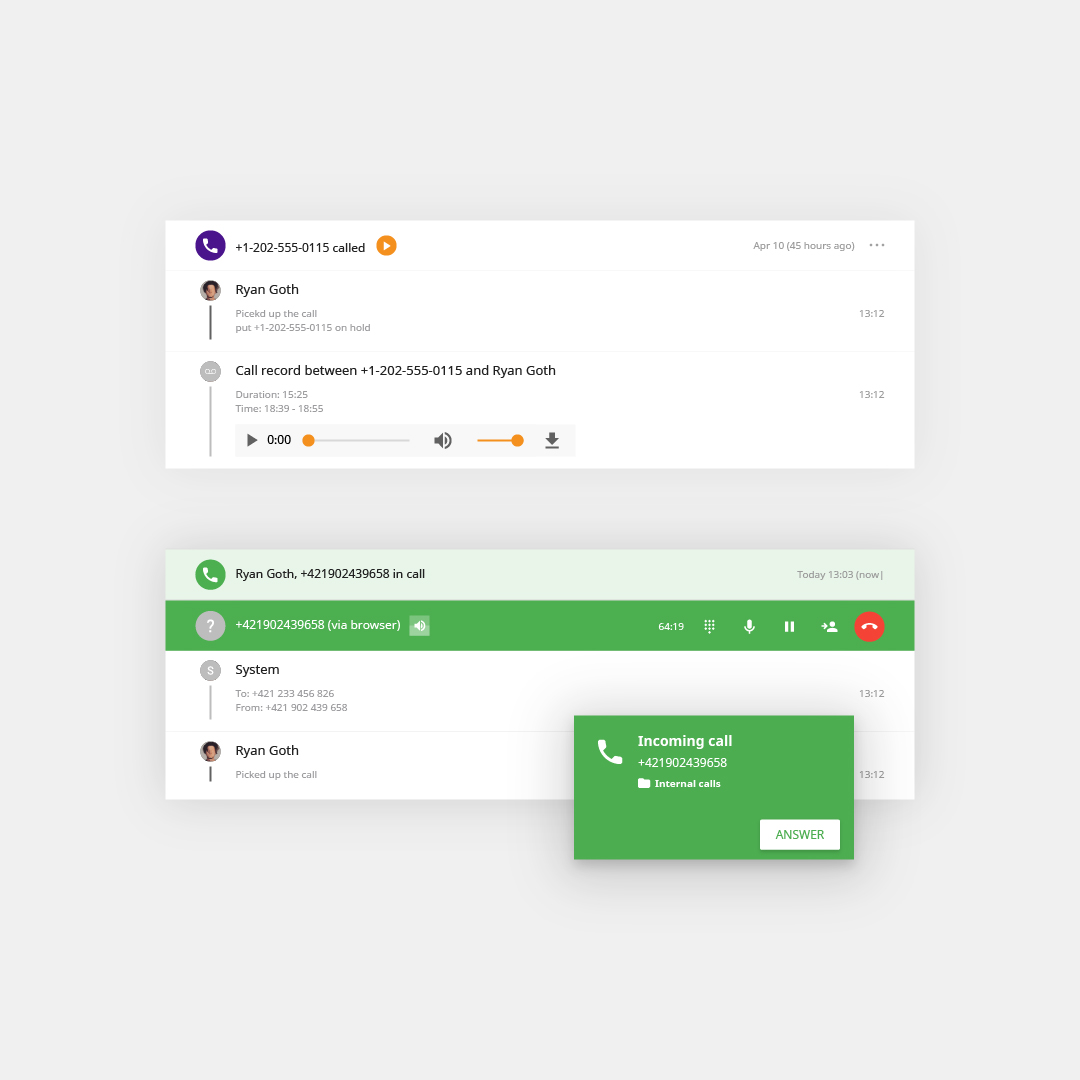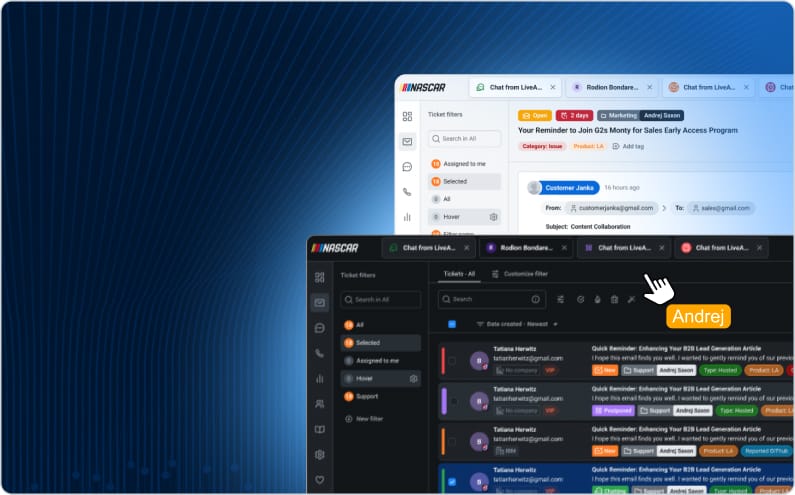When it comes to the call centers, there are basically two types. Inbound and outbound call centers both use advanced software to improve the efficiency of operations. Therefore, maximize the effectiveness and productivity of the agents working in a call center. While many call center software systems are capable of providing both; it’s still important to recognize key differences between inbound and outbound call centers. Thus, you know what to look for when making a decision on which virtual call center solution will best serve your business needs.

What is an inbound call center?
The ‘inbound’ refers to the direction of the call just as the name suggests. Inbound call centers receive and handle phone calls from current and potential customers. Instead of actively making calls; inbound call center agents react to situations initiated by customers and find effective ways to resolve them accordingly.
Inbound callers are usually seeking technical support and product or service assistance. Given the nature of these calls, inbound call centers tend to focus more on customer service. Considering the growing customer demands for immediate service, many inbound call centers are expected to be available 24/7. The staff is typically hired based on the number of anticipated calls.
Most inbound call center service providers rely on; the IVR (Interactive Voice Response) technology and intelligent call routing systems to ensure callers are connected to the right agents. The idea behind designing inbound call center solutions is to; keep agents as busy as possible, reduce the number of call drops and cut down call waiting times.
Top inbound calling metrics to measure;
- First Call Resolution (FCR)
- Average Speed of Answer
- Average Handle Time
- Abandoned Call Rate
- Average Call Transfer Rate
- Customer Satisfaction Score (CSAT)
Types of inbound call center services
Customer service
Providing customer service before, during, and after the purchase is a primary objective of inbound calling. The agents should be equipped to handle all types of customer inquiries. This includes product/service issues, questions about prices/policies/practices, account updates, customer feedback, and complaints, etc.
Technical support
Inbound calling agents may also provide technical support to customers. For instance, troubleshooting and resolving tech-related issues, configuring equipment or software, etc. Tech support is usually broken up into levels (or tiers), with higher ones handling more complex problems. These agents usually require technical knowledge and hard skills.
Receiving orders
Taking orders from customers is another common call center duty of inbound agents. It involves assisting customers in placing orders and processing them to ensure timely delivery, as well as eliminating customer concerns. The efficient performance of agents can additionally help businesses to increase overall sales.
Inbound sales
There are cases when agents receive calls from prospective buyers; who are looking for more information about a company’s products or services. In that situation, they should provide inbound sales services. It generally means capitalizing on the opportunity to motivate callers. Preferably turn warm leads into clients, or at the very least, adding them to the database for future sales.

What is an outbound call center?
In contrast to inbound call centers, outbound call centers are making outgoing calls, for the most part. Businesses use outbound call centers mainly for making sales calls to existing customers. For instance, for renewals/upgrades, cross-selling, up-selling, or reaching out to prospective clients with cold calls. Therefore, most outbound call centers primarily focus on sales.
Outbound call center agents may also call customers to; offer proactive customer service, perform customer satisfaction surveys, conduct market research, collect debts or book appointments. Agents typically work with the lists of customers and prospects to get in touch with. Thus, use a CRM system to track and manage their interactions.
Outbound calls are usually made either manually or automatically via different types of dialers. The dialers allow agents to make more outbound calls in a stipulated time frame, reduce idle times, and increase their productivity.
Top Outbound call metrics to measure;
- Conversion rate (percentage of calls that resulted in a successful sale)
- Calls per agent
- Calls per account
- First call close (FCC)
- Hit rate
- Average call length
- Average hold time
- Occupancy rate
- Abandoned call ratio
- Call quality
Types of outbound call center services
Lead generation/ telemarketing
Outbound call centers use software solutions to gather information about the prospects. They use this data to increase customer interest in a company’s products or services. A number of outsourcing outbound call centers particularly specialize in lead generation and telemarketing. Therefore, helping businesses in acquiring more potential customers, promoting their products, and increasing sales.
Customer surveys
Outbound call center agents also conduct market research and customer surveys. These services are very often outsourced to outbound call centers. Furthermore, used by companies and organizations to discover; how customers react to their marketing efforts or to track customer satisfaction with their products or services.
Appointment scheduling
Both B2B and B2C businesses use appointment scheduling and booking calling center services to set up appointments with prospective clients. These are mostly used by service-oriented businesses, health care organizations, real estate segment, mortgage, financial, and insurance industries. B2B appointment scheduling is also used when products or services are complex in nature and require proper demonstration.
Debt collection
Debt collection services require agents to call individuals or entities that owe money to a business in an attempt to; convince debtors to begin repayment. There are specialized debt collection call centers that are staffed by trained and certified collection agents. Consequently, the agents will have knowledge about the type of debt, the debtor’s profile, and offer different ways of negotiating.
Blended inbound & outbound call center software
Considering today’s market needs, the majority of modern call center software solutions are blended and support; inbound and outbound calling capabilities. Thus, enabling businesses to provide both inbound and outbound call center services. Larger call centers are often split between inbound agents handling customer support and outbound agents involved in sales activity. Whereas in smaller call centers the agents may manage both – inbound and outbound calls. For businesses looking to offer customer service and support for inbound communications; as well as reach out to customers proactively through outbound communications. In this case, a blended inbound and outbound call center software would be a preferred solution.
Discover on your own
Knowledge is important, but only when put into practice. Create a forum for your customers right inside the LiveAgent.

Try out LiveAgent for FREE
Handle all customer inquiries from one interface. Start improving your customer service with a 30-day free trial right away!
Frequently Asked Questions
What are outbound call center services?
Outbound call center services refer to the practice of call centers making outbound calls to customers or potential customers. These services are typically used for telemarketing, sales, and customer service purposes. They can include tasks such as cold calling, lead generation, market research, and follow-up calls. Outbound call center services are often used by businesses to proactively reach out to their target audience and engage with them to drive sales and customer satisfaction.
How does outbound call centers work?
Outbound call centers work by making calls to customers or potential customers on behalf of a company. These calls are typically made for sales, customer service, or survey purposes. The process begins with the call list, which can be generated from various sources such as customer databases or lead generation activities. The goal is to reach out to customers or prospects to achieve the desired outcomes, whether it's making a sale, providing assistance, or gathering feedback.
What are the benefits of outbound call centers?
Outbound call centers can be instrumental in conducting market research or reaching out to potential customers. They can also be used for telemarketing and sales purposes, allowing businesses to directly engage with their target audience. Additionally, outbound call centers can provide valuable customer service, such as following up on inquiries or addressing customer concerns. These benefits can contribute to a company's overall sales and customer satisfaction efforts.
What is the difference between inbound and outbound telemarketing?
Inbound telemarketing refers to the process of receiving or answering incoming calls from potential customers who are interested in a product or service. Outbound telemarketing, on the other hand, involves making outgoing calls to potential customers in order to generate leads, make sales, or conduct market research.
Help desk vs service desk: Understanding key difference
Discover the key differences between help desks and service desks to choose the best fit for your business needs. Learn about their unique features, benefits, and find expert guidance on selecting the right tool. Plus, enjoy a free trial of LiveAgent's renowned help desk software and elevate your customer service today!
Discover effective strategies to manage your customer service queue, reduce wait times, and boost agent efficiency at LiveAgent. Learn about different types of support queues and explore 10 proven tips to enhance ticket prioritization and improve customer satisfaction. Start optimizing your support process today!
Enhance your call center's efficiency and customer satisfaction with our comprehensive templates. From greeting callers to handling angry customers, these templates provide practical phrases and etiquette tips to improve communication and build strong customer relationships. Explore our free, easy-to-use resources and elevate your customer service game today!

 Български
Български  Čeština
Čeština  Dansk
Dansk  Deutsch
Deutsch  Eesti
Eesti  Español
Español  Français
Français  Ελληνικα
Ελληνικα  Hrvatski
Hrvatski  Italiano
Italiano  Latviešu
Latviešu  Lietuviškai
Lietuviškai  Magyar
Magyar  Nederlands
Nederlands  Norsk bokmål
Norsk bokmål  Polski
Polski  Română
Română  Русский
Русский  Slovenčina
Slovenčina  Slovenščina
Slovenščina  简体中文
简体中文  Tagalog
Tagalog  Tiếng Việt
Tiếng Việt  العربية
العربية  Português
Português 









